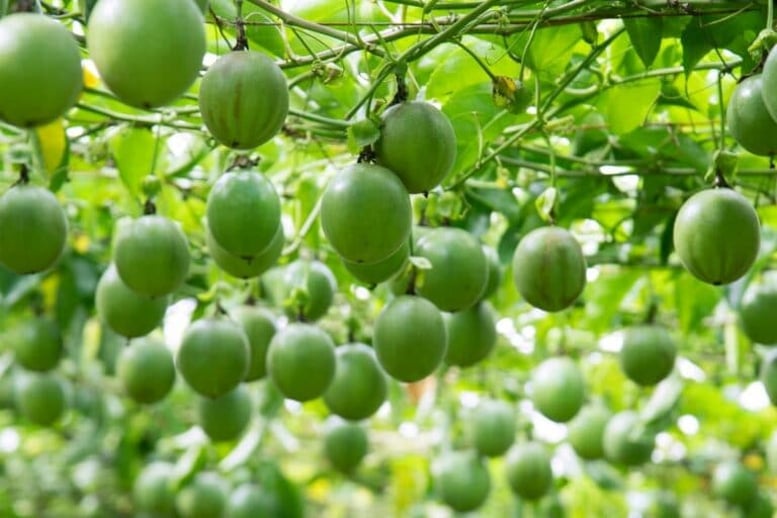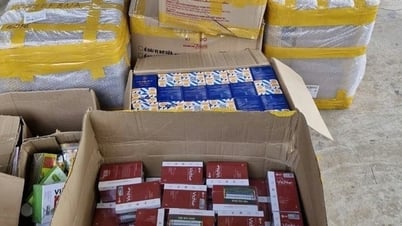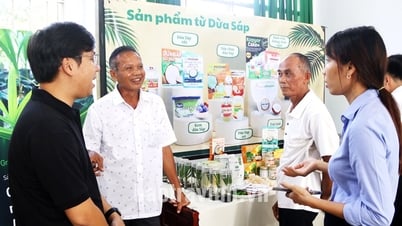
Passion fruit and chili officially exported to China
Fruit and vegetable exports down more than 11%
According to the Vietnam Fruit and Vegetable Association, the export turnover of fruits and vegetables in the first quarter of 2025 reached 1.14 billion USD, down 11.3% compared to the same period in 2024. In March 2025 alone, the export value is estimated at 450 million USD, but not enough to make up for the decline in the first two months of the year.
Durian has been a staple, leading the export turnover of Vietnamese fruits and vegetables in recent years. In 2024, durian will reach an export turnover of 2.85 billion USD, accounting for 46% of the total export turnover of fruits and vegetables.
However, in the first two months of 2025, durian exports decreased by 70% compared to the same period in 2024, causing the export turnover of this item to fall lower than that of bananas and dragon fruit.
Mr. Dang Phuc Nguyen, General Secretary of the Vietnam Fruit and Vegetable Association, analyzed that the decline in durian export turnover is the main factor negatively affecting the fruit and vegetable industry. Mr. Nguyen said that China is checking 100% of durian shipments from Vietnam, similar to Thailand. This leads to a situation where goods have to wait a long time at the border gate, causing damage and quality degradation.
Currently, the durian off-season is over, and many localities, especially in the West, are preparing to enter the main harvest season. However, Mr. Nguyen expressed concern about the output of durian in the coming time. With the current 100% inspection speed, the risk of goods congestion at the border gate is still high. He hopes that promoting electronic customs clearance between Vietnam and China, along with reducing the sampling rate, will help shorten customs clearance time, creating more favorable conditions for export enterprises.
To develop the durian industry sustainably, Mr. Dang Phuc Nguyen emphasized the need to control quality right from the production stage. Specifically, gardeners need to check durian samples 10-15 days before harvest to ensure there are no cadmium residues or yellow O - two factors that are often strictly controlled by China. For yellow O, control is easier because this substance is often used in the preliminary processing stage to beautify the fruit. When the import market tightens control, preliminary processing facilities will be forced to give up this habit.
However, with cadmium, the issue is more complicated because it is related to the quality of the soil. Mr. Nguyen recommends that gardeners proactively test the soil to handle if cadmium contamination is detected. Strict control at the source will help minimize the risk of cadmium-contaminated shipments being mixed with standard shipments, while also building a transparent and systematic business image with the Chinese side. This can convince China to reduce the rate of cadmium testing, creating more favorable conditions for durian exports.
Currently, China is still the largest market for Vietnamese fruits and vegetables, accounting for 44.5% of export value, followed by the United States (9.6%) and South Korea (6%). However, in the first two months of 2025, export value to China decreased by 38.9%, while exports to the United States increased by 65.5% and South Korea increased slightly by 0.1%. Among the 15 largest export markets, the UK recorded the strongest increase of 77.8%, while China decreased the most with 38.9%.
With the current situation, Mr. Nguyen believes that fruit and vegetable exports in 2025 will hardly reach the expected target of 7 billion USD. If China reduces the sampling rate and Vietnam controls the yellow O and cadmium substances well, exports may increase again. However, he predicts that the export turnover of fruits and vegetables in 2025 will only reach over 6 billion USD, lower than the set target but still a remarkable figure in the context of many difficulties.
Recently, the Ministry of Agriculture and Environment signed three protocols with China, including two fruit and vegetable products: chili and passion fruit. Mr. Nguyen commented that it would be difficult for these two products to make a big breakthrough because China can grow them in large quantities. Previously, when China could not grow dragon fruit, Vietnam exported this product for more than 1 billion USD/year. However, when China developed domestic production, dragon fruit export turnover decreased to 400-500 million USD/year.
Similarly, Vietnamese chili and passion fruit will have to compete fiercely with domestic products from China and other exporting countries such as India. Mr. Nguyen predicts that chili and passion fruit exports to China can only double compared to 2024, meaning each item will increase by 100-200 million USD/year. Although these two items contribute to the total export turnover of fruits and vegetables, they will hardly be able to offset the sharp decline in durian. Other items such as bananas, even if they grow, will only contribute about 100-200 million USD.
In fact, to sustainably develop fruit and vegetable products in general, it is necessary to build a real production chain from growing areas, packaging facilities to exporting enterprises, ensuring plant quarantine and food safety standards. Along with that, experts from the Southern Fruit Institute also made recommendations to improve post-harvest processing procedures to improve the quality of exported fruit trees.
Do Huong
Source: https://baochinhphu.vn/xuat-khau-rau-qua-nhin-tu-su-sut-giam-cua-sau-rieng-10225041618411121.htm


![[Photo] General Secretary To Lam visits exhibition of achievements in private economic development](https://vphoto.vietnam.vn/thumb/1200x675/vietnam/resource/IMAGE/2025/5/18/1809dc545f214a86911fe2d2d0fde2e8)
![[Photo] More than 17,000 candidates participate in the 2025 SPT Competency Assessment Test of Hanoi National University of Education](https://vphoto.vietnam.vn/thumb/1200x675/vietnam/resource/IMAGE/2025/5/17/e538d9a1636c407cbb211b314e6303fd)



![[Photo] National conference to disseminate and implement Resolution No. 66-NQ/TW and Resolution No. 68-NQ/TW of the Politburo](https://vphoto.vietnam.vn/thumb/1200x675/vietnam/resource/IMAGE/2025/5/18/adf666b9303a4213998b395b05234b6a)


















![[Photo] Prime Minister Pham Minh Chinh chairs meeting on science and technology development](https://vphoto.vietnam.vn/thumb/1200x675/vietnam/resource/IMAGE/2025/5/17/ae80dd74c384439789b12013c738a045)


































































Comment (0)